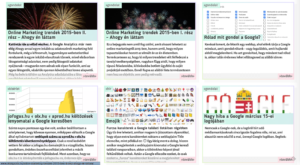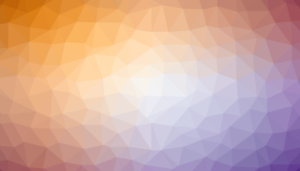I had spent so much time searching for the perfect WordPress theme on ThemeForest, but as I haven’t found one which would 100% reflect what I think about modern websites nowadays, I decided to create my own ultra-minimalist, mobile-first theme and made it available for free.
Why have I created my own WP Theme?
Although the previous WordPress theme I had been using at oldalgazda.hu was quite OK, somehow I didn’t like it 100%, just could not feel that it was ”my way” of building a web site. As oldalgazda.hu have been lately only a hobby project, it was crucial that the site I am tinkering with has a web design I really like, and nevertheless, it is simple enough that I could easily alter it and further develop however I feel like.
During recent years I have come across quite a few innovative and interesting WordPress themes such as Mila or Evolutive, but my biggest problem with these and similar themes that they are just too image-centric: should I eliminate images from the demo content, they just become way less impressive. On the other hand this article about website obesity had a great influence on me, so no matter how I really appreciate JavaScript stuff like Masonry, Isotope, etc., this time I wanted to create something really minimalist for myself: A kind of theme which only adds the absolutely, inevitably necessary amount of code to the actual content, so that I could concentrate on what really matters: the content itself.
What is the essence of my Sixpack WordPress Theme?
- Ultra-minimalist: As the name indicates, the basic principle of this theme is that there cannot be more than six content items visible on the screen – for the sake of clarity and readability. Of course, more content items can be accessed by scrolling down the page, but the basic rule applies there too: no more than „six packs” of content should be displayed on the screen at the same time.
- Tile-based: The content items are displayed as tiles. I think Windows’ Metro interface was a great innovation, as only the tiles can provide a consistent appearance independently of screen size.
- Mobile-first: While developing this on a desktop computer, I was always thinking about how this or that would look on a smaller screen, so when I finished testing the basic stuff on bigger screens, I just needed a handful of special CSS rules for small screens: mostly for decreasing the number of the simultaneously displayed content items from 6 to 2-3-4.
- Forcing you to publish the right way: The theme will look at its best if every entry has a short introduction and a featured image, something you will eventually need when you post it anywhere else. Posts and Pages are treated in a very similar way, almost identically listed everywhere (except that for Posts rather categories are shown and for Pages, the page hierarchy is displayed). Instead of defining a header image or a logo for the entire site, you can use sticky posts to display important stuff such as the title and goal of the site, its logo and perhaps a short description.
- Made for a real site: This theme was made for my own purposes. It has been tested how it works with real content, not just with a bunch of stunning images just to create a nice demo site. I am also planning to develop it in the future to better serve my needs, so you can make sure the theme just works – or will work someday :).
What other features are worth mentioning?
- No theme settings page: On one hand it is very comfortable for the average web site owner to have a visual dashboard where many parameters of a WordPress theme can be customised, but I find it rather perverted that the web server has to query and calculate with these parameters additionally whenever it is to display a web page. If we are about to change certain variables almost like once in a lifetime, then these values should be hard coded somewhere instead. All in all, go ahead and edit the template if you need to change something.
- JavaScript-free theme: the theme itself does not load any javascript file, neither contains any embedded JS code. Of course, different plugins might inject their own code, but as far as my theme concerned, you can generate your web pages with only the absolutely necessary amount of HTML and CSS code.
- No logo, header, sidebar, widget: I don’t like that ”let’s cram these not so important stuff into the footer, sidebar, perhaps one day it might be of someone’s interest” approach, I think it is just a waste of screen real estate, as nobody will read and act on these kinds of additional elements. This is the reason why I have omitted these standard WordPress features from my theme.
- No navigation menus: in the era of social media sites, it is quite rare if we can make someone browse our web site and read more entries of ours during one website visit, as most of the visitors will just come for a certain piece of content they have seen on a social media or a search result page. This is the reason why I have not built in any conventional navigation menus.
- Site search pushed back: partly because of the above fact, partly because WordPress search function out-of-the-box is just far from being useful, I did not feel the urge to place an omnipresent search element on each and every web page.
- Contact us element on search result page: I think it is very important that if someone had searched but could not find the right content, we should give them a helping hand, that is providing an easy way of getting in touch with us to find a specific content: therefore you can easily ask for help in e-mail if you click on a special ”contact us” link, displayed on search result pages if there are no results or just a few of them.
- Contact us element on 404 not found page: similarly, I think it is very important that the primary goal of these kinds of pages is not to give you an error message but to provide you with everything which could be useful in finding your way on the web site. This is why the 404 page is rather similar to the site map page, also including a shortcut to ask the website owner’s help in an e-mail.
- Not a general-purpose theme: minimalism and simplification obviously also means a reduced feature set, but as I mentioned the main goal was to create something to serve my blogging needs, so you should add quite a few other visual elements to use this theme for a web shop or a forum.
Other’s work I gratefully used for my theme
- The starter theme was underscores.me, the typefaces are Blogger Sans and Alegreya Sans.
Free download of Sixpack WordPress theme
- Click here to download Sixpack WordPress theme (ver. 1.0.1)
- Feel free to use it for any purpose, even for commercial purposes. The only thing I ask is to reference the author of this theme, so please link http://www.oldalgazda.hu at least somewhere.
- I am thankful for comments, feedback, bug reports, suggestions for improvements.

